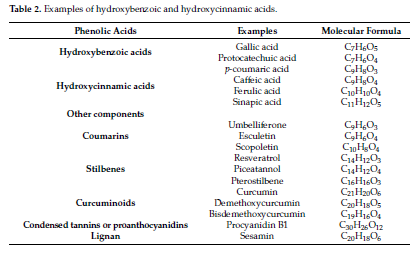Abstract:
Phenolic compounds and flavonoids are potential substitutes for bioactive agents in pharmaceutical and medicinal sections to promote human health and prevent and cure different diseases.The most common flavonoids found in nature are anthocyanins, flavones, flavanones, flavonols,flavanonols, isoflavones, and other sub-classes. The impacts of plant flavonoids and other phenolics on human health promoting and diseases curing and preventing are antioxidant effects, antibacterial impacts, cardioprotective effects, anticancer impacts, immune system promoting, anti-inflammatory effects, and skin protective effects from UV radiation. This work aims to provide an overview of phenolic compounds and flavonoids as potential and important sources of pharmaceutical and medical application according to recently published studies, as well as some interesting directions for future research. The keyword searches for flavonoids, phenolics, isoflavones, tannins, coumarins,lignans, quinones, xanthones, curcuminoids, stilbenes, cucurmin, phenylethanoids, and secoiridoids medicinal plant were performed by using Web of Science, Scopus, Google scholar, and PubMed.Phenolic acids contain a carboxylic acid group in addition to the basic phenolic structure and are mainly divided into hydroxybenzoic and hydroxycinnamic acids. Hydroxybenzoic acids are based on a C6-C1 skeleton and are often found bound to small organic acids, glycosyl moieties, or cell structural components. Common hydroxybenzoic acids include gallic, syringic, protocatechuic,
p-hydroxybenzoic, vanillic, gentistic, and salicylic acids. Hydroxycinnamic acids are based on a C6-C3 skeleton and are also often bound to other molecules such as quinic acid and glucose. The main hydroxycinnamic acids are caffeic, p-coumaric, ferulic, and sinapic acids.
Key Words:
phenolics; curcumin; protocatechuic; quinones; stilbenes; curcuminoids



